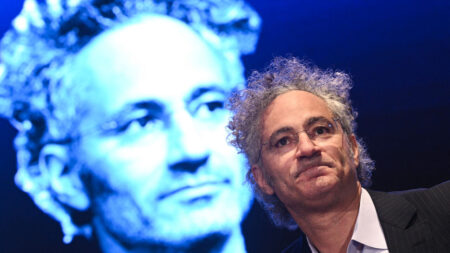Lord King’s analogy was apt, as central bankers had indeed managed to guide investor expectations and achieve their desired outcomes without having to make significant changes to official rates. The unconventional measures taken during times of crisis had proven to be effective in stimulating economies and maintaining control over inflation. However, as the global economy began to recover from the effects of the pandemic, central banks faced a new set of challenges that tested the limits of the Maradona theory.
One of the key issues that central bankers grappled with was the threat of rising inflation. As economies reopened and activity picked up, there were concerns that pent-up demand and supply chain disruptions could lead to a surge in prices. This put pressure on central banks to reconsider their ultra-loose monetary policies and potentially raise interest rates to combat inflation. However, the challenge lay in how to communicate this shift in policy without causing market volatility or derailing the fragile recovery.
The Maradona theory, with its emphasis on managing expectations, was put to the test once again. Central bankers had to tread carefully, ensuring that any signals of future rate hikes were clear and credible, while also avoiding any premature actions that could stifle economic growth. The communication strategy became a critical tool in central banks’ arsenal, as they sought to strike a delicate balance between signaling their intent to tighten policy and providing reassurance that any changes would be gradual and data-dependent.
In the United States, the Federal Reserve, under the leadership of Chair Jerome Powell, faced the daunting task of navigating the post-pandemic recovery and managing inflation expectations. The Fed’s pivot towards a more hawkish stance, signaling its willingness to consider tapering its asset purchases and potentially raising interest rates sooner than previously anticipated, sent shockwaves through financial markets. Investors had become accustomed to the Fed’s dovish rhetoric and were unprepared for the shift in tone, leading to a sharp sell-off in bonds and equities.
The reaction highlighted the challenges of central bank communication in a highly uncertain and volatile environment. The Fed’s attempt to prepare markets for a change in policy stance ultimately backfired, as investors interpreted the signals as a sign of panic rather than prudence. The importance of clear and consistent messaging became evident, as central banks sought to maintain credibility and avoid any misinterpretations that could trigger a disruptive market response.
As central banks grapple with the complexities of managing monetary policy in a post-pandemic world, the Maradona theory continues to offer valuable insights. The ability to influence market expectations and shape outcomes through effective communication remains a powerful tool in central banks’ toolkit. However, the challenges posed by evolving economic conditions and shifting investor sentiment require central bankers to adapt and refine their strategies to navigate uncertain waters successfully. Lord King’s analogy may still hold true, but central bankers must be prepared to adjust their tactics and embrace new approaches to secure their goals effectively.












